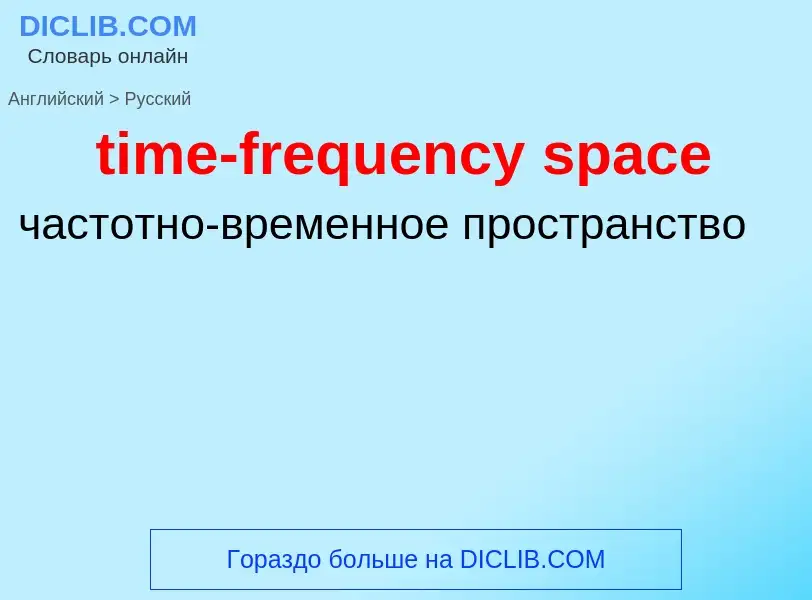Translation and analysis of words by ChatGPT artificial intelligence
On this page you can get a detailed analysis of a word or phrase, produced by the best artificial intelligence technology to date:
- how the word is used
- frequency of use
- it is used more often in oral or written speech
- word translation options
- usage examples (several phrases with translation)
- etymology
time-frequency space - translation to russian
[speiʃiəu'temp(ə)rəl]
прилагательное
общая лексика
пространственно-временной
математика
пространственноподобный
Смотрите также
Definition
Wikipedia
A time–frequency representation (TFR) is a view of a signal (taken to be a function of time) represented over both time and frequency. Time–frequency analysis means analysis into the time–frequency domain provided by a TFR. This is achieved by using a formulation often called "Time–Frequency Distribution", abbreviated as TFD.
TFRs are often complex-valued fields over time and frequency, where the modulus of the field represents either amplitude or "energy density" (the concentration of the root mean square over time and frequency), and the argument of the field represents phase.


!['''here''']]. '''here''']].](https://commons.wikimedia.org/wiki/Special:FilePath/Accelerated relativistic observer with horizon.png?width=200)



!['''Click here to animate.''']] '''Click here to animate.''']]](https://commons.wikimedia.org/wiki/Special:FilePath/General relativity time and space distortion frame 1.png?width=200)











